Choose your family movie!
The grand event of the entire global entertainment market, the annual 2023 Hollywood Family Film Awards, is about to take place. This time, the program will be simultaneously broadcast on CW, CBS, and over 100 television stations in the United States. Now is the time for your participation because our readers and the general public represent diverse audience groups. Your votes can reflect a broader range of tastes and interests, contributing to making our Family Movie Awards more diverse and inclusive.
Celebrate Christmas
The most fitting family movies for Halloween.
Selected 13 horror movies for family movie night.
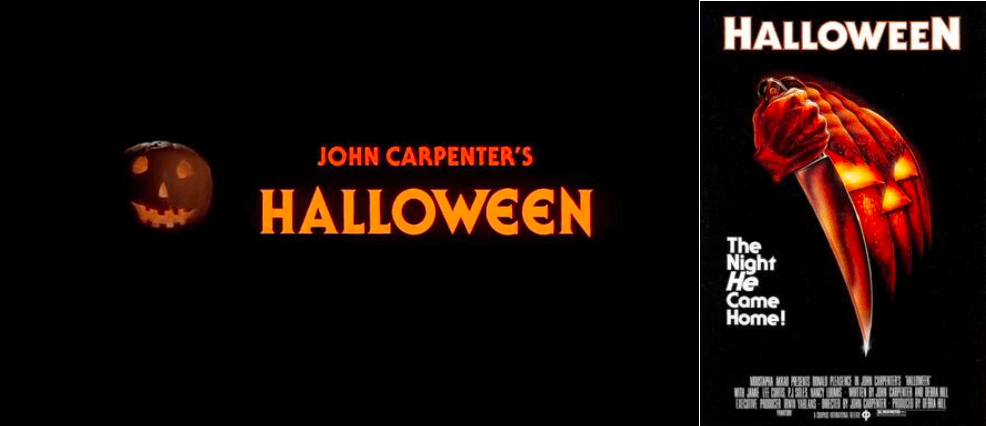
No. 13 "Halloween"
Soles and Nancy Loomis in supporting roles. Set primarily in the fictional town of Haddonfield, Illinois, the story revolves around Michael Myers, a mentally ill man who was admitted to a nursing home as a child for murdering his teenage sister on Halloween night. Fifteen years later, he flees back to his hometown, stalking teenage nanny Laurie Strode and her friends, pursued by psychiatrist Dr. Samuel Loomis.
The film was shot in Southern California in May 1978. It premiered in October, grossing 70 million dollars at the box office and becoming one of the highest-grossing independent films of all time. Carpenter's direction and score received significant praise, with many critics considering the film the first in a series of horror movies inspired by Alfred Hitchcock's "Psycho" (1960) and Bob Clark's "Black Christmas" (1974). It is regarded as one of the greatest and most influential horror films of all time. In 2006, the Library of Congress selected it for preservation in the National Film Registry, citing its "cultural, historical, or aesthetic significance."
Halloween spawned a thirteen-film franchise that helped build an extensive backstory for its antagonist, Michael Myers, that was sometimes narratively completely different from its predecessors. Additionally, a novel, video game, and comic book series were adapted from the film.
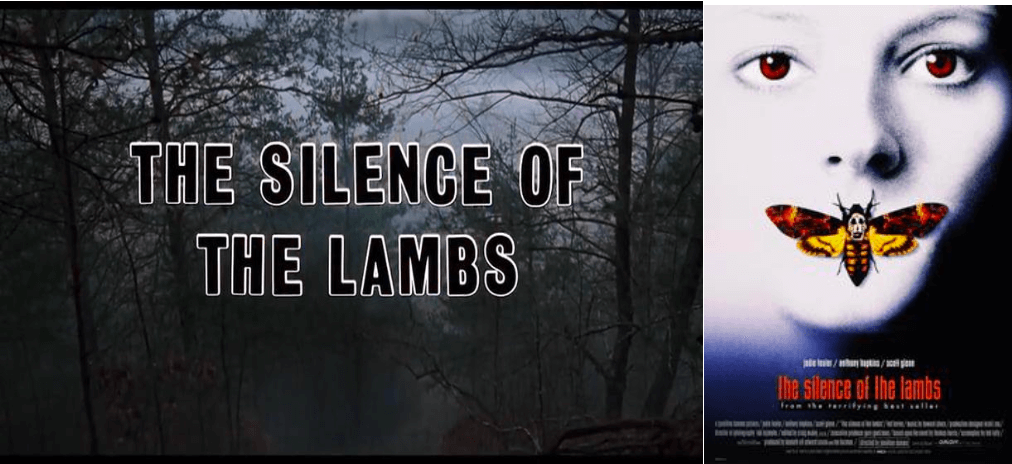
No. 12 "The Silence of the Lambs"
"The Silence of the Lambs" is a 1991 American psychological horror-thriller film directed by Jonathan Demme, with a screenplay by Ted Tally. It is adapted from Thomas Harris's 1988 novel of the same name. Jodie Foster plays the role of Clarice Starling, a young FBI trainee on the hunt for a serial killer known as "Buffalo Bill" (played by Ted Levine), who skins his female victims. To catch him, she seeks advice from the imprisoned Dr. Hannibal Lecter (played by Anthony Hopkins), a brilliant psychiatrist and cannibalistic serial killer. Scott Glenn, Anthony Heald, and Kasi Lemmons also star in the film.
"The Silence of the Lambs" was released on February 14, 1991, with a budget of $19 million. It grossed $272.7 million worldwide, making it the fifth-highest-grossing film globally in 1991. The film premiered at the 41st Berlin International Film Festival, competing for the Golden Bear, with Jonathan Demme winning the Silver Bear for Best Director. It became the third and the latest film at that time (the other two being "It Happened One Night" in 1934 and "One Flew Over the Cuckoo's Nest" in 1975) to win all five major Academy Awards: Best Picture, Best Director, Best Actor, Best Actress, and Best Adapted Screenplay. It is the only horror film to win the Best Picture Oscar.
"The Silence of the Lambs" is often hailed by critics, filmmakers, and audiences as one of the greatest and most influential films. In 2018, Empire magazine ranked it 48th on the list of the 500 greatest films of all time. The American Film Institute considers it the fifth-greatest and most influential thriller, while Clarice and Lecter were named the greatest film heroine and villain. The film is deemed to have "cultural, historical, or aesthetic" significance by the Library of Congress and was selected for preservation in the National Film Registry in 2011. The sequel, "Hannibal," was released in 2001, followed by two prequel films, "Red Dragon" (2002) and "Hannibal Rising" (2007).

No. 11 "Evil"
"The Evil" is a 1982 American supernatural horror film directed by Sidney J. Furie, with a screenplay by Frank De Felitta based on his novel. The film stars Barbara Hershey, Ron Silver, and David Labiosa. It tells the story of a suburban family whose home is invaded by a malevolent entity that kidnaps their youngest daughter.
Due to Spielberg's contractual obligation and involvement in directing "E.T. the Extra-Terrestrial" during the filming of "Poltergeist," Toby Hooper was chosen to direct the film. Spielberg, inspired by his 1977 films "Close Encounters of the Third Kind" and "Night Skies," originally conceived "Poltergeist" as a horror sequel. However, Hooper was less interested in the sci-fi elements and suggested they collaborate on creating a ghost story instead. There are varying accounts of Spielberg's level of involvement, but it is evident that he was frequently present on set during filming and exerted significant creative control. As a result, some argue that Spielberg should be considered either a co-director or even the primary director of the film, though both Spielberg and Hooper have expressed differing opinions on this matter.
"Poltergeist" was released on June 4, 1982, by Metro-Goldwyn-Mayer/United Artists. The film achieved immense success both critically and commercially, becoming the eighth-highest-grossing film of 1982. It is widely recognized as a horror classic, receiving three Oscar nominations. The Chicago Film Critics Association ranked it as the 20th scariest film of all time, and the scene with the clown doll attacking was ranked 80th in Bravo's "100 Scariest Movie Moments." Additionally, "Poltergeist" secured the 84th position in the American Film Institute's "100 Years...100 Thrills," listing the most thrilling American films. Subsequent installments, including "Poltergeist II: The Other Side" (1986), "Poltergeist III" (1988), and the 2015 remake, received less favorable reviews.
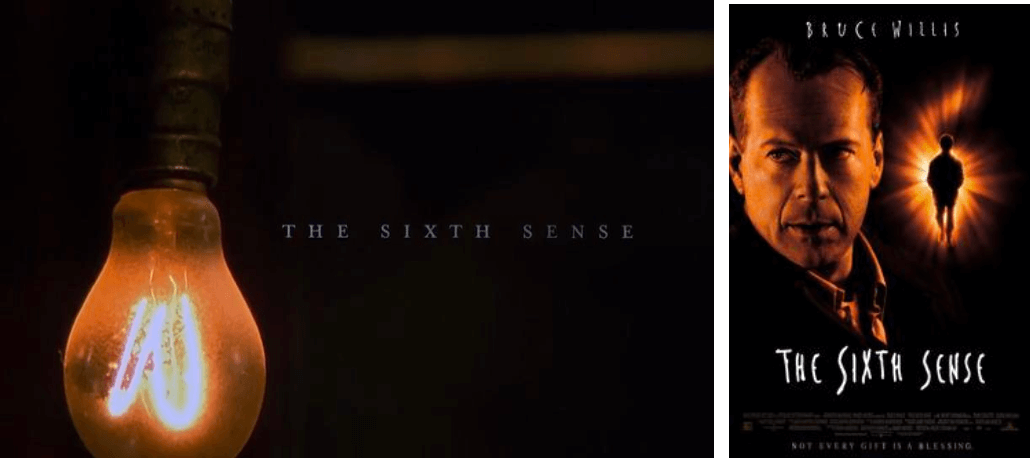
No. 10 "The Sixth Sense"
"The Sixth Sense" is a 1999 American psychological thriller film written and directed by M. Night Shyamalan. Bruce Willis plays a child psychologist whose patient, portrayed by Haley Joel Osment, claims to see and communicate with the dead.
"The Sixth Sense" was released on August 6, 1999, by Hollywood Pictures (through its parent company, Buena Vista Pictures). The film received widespread acclaim for its performances, particularly by Bruce Willis, Haley Joel Osment, and Toni Collette, as well as for its atmosphere, direction, and unexpected ending. It earned six Academy Award nominations, including Best Picture, Best Director, and Best Original Screenplay for M. Night Shyamalan, Best Supporting Actor for Haley Joel Osment, and Best Supporting Actress for Toni Collette. The film solidified Shyamalan's position as a major thriller writer/director and introduced his signature twist endings to the moviegoing audience.
The film was the second-highest-grossing movie of 1999, following "Star Wars: Episode I - The Phantom Menace." It earned approximately $293 million in the United States and around $379 million in other markets, making it a significant box office success for the year.

No. 9 "Night of the Living Dead"
"Night of the Living Dead" is a 1968 American independent horror film that introduced the concept of flesh-eating zombies, later synonymous with the term "zombies." The story follows seven people trapped in a farmhouse in rural Pennsylvania, besieged by reanimated corpses. The film was directed, photographed, and edited by George A. Romero, who also co-wrote the screenplay with John Russo. Russell Streiner and Karl Hardman served as producers, and the film starred Duane Jones and Judith O'Dea.
Romero and his friends, Russo and Streiner, gained experience directing television commercials and industrial films for their production company, Latent Image. They decided to venture into feature filmmaking and chose to produce a horror film to capitalize on the genre's commercial appeal. The script was primarily influenced by Richard Matheson's 1954 novel "I Am Legend." Principal photography took place between July 1967 and January 1968, with the primary location in Evans City. The cast and crew consisted of friends, local stage and amateur actors, as well as residents of the area. Leveraging guerrilla filmmaking techniques honed in their commercial and industrial work, Romero completed the film with a budget of approximately $100,000.
"Night of the Living Dead" premiered in Pittsburgh on October 1, 1968. The domestic box office gross was $12 million, with an international gross of $18 million, making it one of the most profitable film productions at the time, exceeding its budget by over 250 times. The film faced controversy and negative reviews upon its initial release due to its explicit violence and gore, especially considering its recent adoption into the MPAA rating system. However, it eventually gained a passionate following and critical acclaim, earning a place on lists of the greatest and most influential films by media outlets such as Empire, The New York Times, and Total Film. Retroactive academic analyses often consider it a milestone in the development of the horror genre, emphasizing its reflection of the social and cultural changes in 1960s America, with particular attention to the casting of African American actor Duane Jones in the lead role. In 1999, the film was deemed "culturally, historically, or aesthetically significant" by the Library of Congress and selected for preservation in the National Film Registry.
"Night of the Living Dead" spawned a successful franchise, including five sequels released between 1978 and 2009, all directed by George A. Romero. Due to an error in the original film's copyright notice, it entered the public domain shortly after its release, leading to numerous adaptations, remakes, and a lasting legacy in the horror genre. An official remake, written by Romero and directed by Tom Savini, was released in 1990.

第 8 名 《它》
It (titled "It Chapter One" on screen) is a 2017 American supernatural horror film directed by Andy Muschietti, with a screenplay by Chase Palmer, Cary Fukunaga, and Gary Dauberman. It is the first part of a two-part adaptation of Stephen King's 1986 novel of the same name, primarily covering the first half of the book in chronological order. This film is the first installment in the It film series and the second adaptation following the 1990 miniseries directed by Tommy Lee Wallace. The movie stars Jaeden Lieberher and Bill Skarsgård in lead roles, with supporting roles played by Jeremy Ray Taylor, Sophia Lillis, Finn Wolfhard, Wyatt Oleff, Jason Fuchs, Jack Dylan Grazer, Nicholas Hamilton, and Jackson Robert Scott. The film is produced by New Line Cinema [...].
The theatrical film adaptation of "It" began development in March 2009 when Warner Bros. started discussions about bringing it to the big screen. Initially, David Kajganich was planned to direct, but in June 2012, Cary Fukunaga took over. Andy Muschietti took on the role of director in May 2015 and officially signed on to direct the film in June 2015. Muschietti mentioned drawing inspiration from films such as "The Howling" (1981), "The Thing" (1982), "The Goonies" (1985), "Stand by Me" (1986), and "Near Dark" (1987), and cited the influence of Steven Spielberg. During the development process, the film moved to the New Line Cinema division in May 2014. Principal photography began on June 27, 2016, in Toronto and concluded on September 21, 2016. Filming locations included various areas in the Greater Toronto Area, including Port Hope, Oshawa, and Riverdale. Benjamin Wallfisch was hired in March 2017 to compose the film's score.
The film premiered at the TCL Chinese Theatre in Los Angeles on September 5, 2017, and was released in the United States in 2D and IMAX formats on September 8, 2017. It achieved both critical and commercial success, breaking numerous box office records with a global revenue surpassing $701 million, making it the third-highest-grossing R-rated film at the time and the highest-grossing horror film in history without adjusting for inflation. It received widespread acclaim, with praise for its performances, direction, cinematography, and music. Many critics considered it one of the best adaptations of Stephen King's work. The film garnered numerous awards and nominations, including two Washington D.C. Area Film Critics Association nominations for Best Ensemble and Best Sci-Fi/Horror Film. It won three Saturn Awards and attracted over two million German viewers within 11 days. Additionally, it was recognized as one of the best films of 2017 by several critics and appeared on year-end lists. The second film, "It Chapter Two," was released on September 6, 2019, covering the remaining story from the novel.
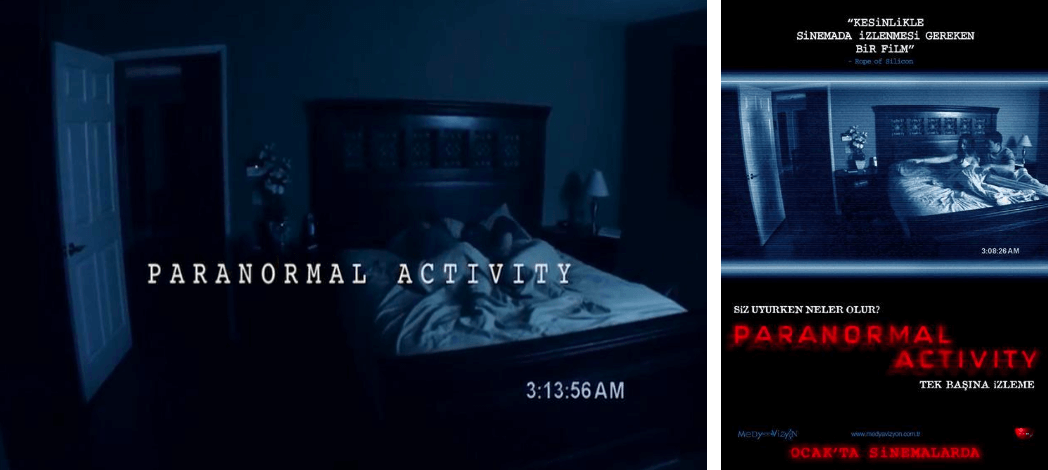
No. 7 "Paranormal Activity"
Paranormal Activity is an American supernatural horror film series consisting of seven films and other media. Original film by Oren Paley
The films are usually based on different families who are haunted by the demon Asmodeus "Tobit" from the Book of Tobit, who stalks, terrorizes, and ultimately murders several family members and other bystanders over the course of the film By. Utilizing production cameras set up as security cameras or other recording devices, the series attempts to present the film as found footage.
All films in the series received mixed reviews overall. The first and third films received generally positive reviews, the second and fifth films received mixed reviews, and the fourth, sixth, and seventh films received mostly negative reviews . The series was a financial success, earning handsome profits based on return on investment. The entire series grossed more than thirty times its total budget.
The seventh installment in the mainline series is titled "Next of Kin" and was released on Paramount+ streaming service on October 29, 2021.

No. 6 "The Blair Witch Project"
"The Blair Witch Project" is a 1999 American supernatural horror film, written, directed, and edited by Daniel Myrick and Eduardo Sánchez. The film tells the fictional story of three student filmmakers, Heather Donahue, Michael C. Williams, and Joshua Leonard, who hiked into the Black Hills near Burkittsville, Maryland, in 1994 to film a documentary about the local legend of the "Blair Witch." The three go missing, but a year later, their equipment and footage are discovered. The so-called "found footage" is what the audience sees in the film.
In 1993, Myrick and Sánchez conceived a fictional legend about the Blair Witch. They wrote a 35-page script, with much of the dialogue improvised. The directors prepared casting ads in "Backstage" magazine, and Donahue, Williams, and Leonard were chosen as actors. The film went into production in October 1997, with the main shoot taking place in Maryland over eight days. Approximately 20 hours of footage were shot and edited down to 82 minutes. The original budget for the film was between $35,000 and $60,000, but after post-production editing, the final cost ranged from $200,000 to $750,000.
When "The Blair Witch Project" premiered at the Sundance Film Festival on January 23, 1999, at midnight, its promotional campaign listed the actors as "missing" or "deceased." Due to the film's successful screening at the Sundance Film Festival, Artisan Entertainment acquired the distribution rights for $1.1 million. The movie had a limited release on July 14 of the same year and then expanded on July 30. While the critical reception was largely positive, audience reactions varied.
"The Blair Witch Project" earned nearly $250 million globally, making it one of the most successful independent films in history. It ranks as the 41st highest-grossing horror film and is considered a cult film. The movie spawned a media franchise, including two sequels ("Book of Shadows" and "Blair Witch"), novels, comic books, and video games. The film is credited with revitalizing found-footage techniques, which later found success in similar horror films like "Paranormal Activity" and "Cloverfield."
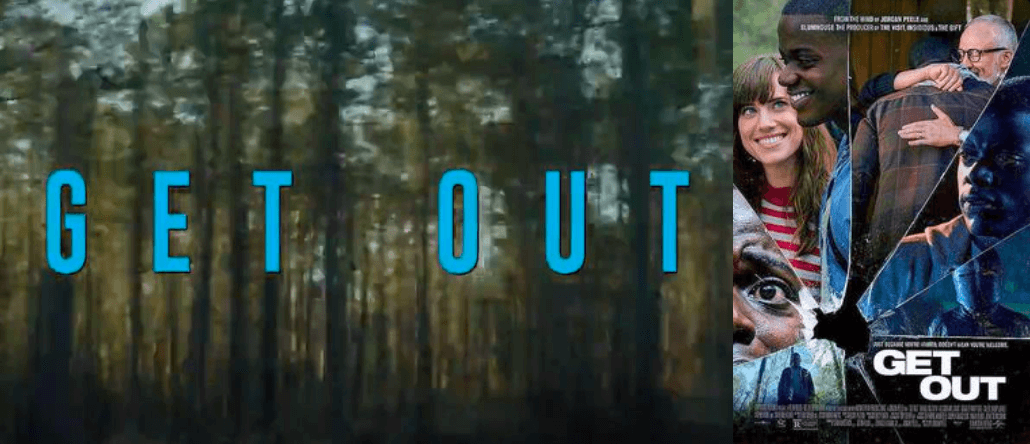
No. 5 "Escape"
"GET OUT" is a 2017 American psychological horror film, written, co-produced, and directed by Jordan Peele, marking his directorial debut. The film stars Daniel Kaluuya, Allison Williams, Lil Rel Howery, Lakeith Stanfield, Bradley Whitford, Caleb Landry Jones, Stephen Root, and Catherine Keener. The story follows a young African American man (Kaluuya) who uncovers disturbing secrets when he meets the family of his white girlfriend (Williams).
Principal photography for "Get Out" began in February 2016 in Fairhope, Alabama, before moving to Barton Academy and Ashland Place Historic District in Mobile, Alabama. The entire film was shot over a period of 23 days.
"Get Out" premiered at the Sundance Film Festival on January 23, 2017, and was theatrically released by Universal Pictures in the United States on February 24, 2017. The film received critical acclaim for its screenplay, direction, performances, and social commentary. It achieved significant commercial success, grossing $255 million worldwide against a budget of $4.5 million, making it the tenth most profitable film of 2017.
"It" has been selected as one of the top ten films of the year by the National Board of Review, the American Film Institute, and TIME magazine. Jordan Peele won the Best Original Screenplay award at the 90th Academy Awards (Oscars) and received additional nominations for Best Picture, Best Director, and Best Actor (Daniel Kaluuya). The film also garnered five nominations at the 23rd Critics' Choice Awards, two nominations at the 75th Golden Globe Awards, and two nominations at the 71st British Academy Film Awards. "Get Out" has been widely acclaimed by critics as one of the best films of the 2010s and the 21st century.

No. 4 "Midnight Ring"
"The Ring" (Japanese: リング, Ringu) is a media franchise based on the novel of the same name by Koji Suzuki. The franchise includes eight Japanese films, two TV series, eight manga adaptations, three English-language film remakes, a South Korean film remake, and two video games: "Ring: Terror's Realm" and "Ring: Infinity," both released in 2000. While most works in the series are dramatic supernatural horror stories, it has also explored other genres. The novel "Loop" (1998) focuses on science fiction, and the manga series "Sadako-san and Sadako-chan" (2019) and "Sadako at the End of the World" (2020), along with the comedy film "Sadako DX" (2022), are centered around comedy.
The movie "The Ring" revolves around a cursed videotape; those who watch it will die seven days later unless the tape is copied and shown to another person, who must then repeat the same process. The videotape was created by the spirit Sadako Yamamura, a psychic who was murdered by her foster father and thrown into a well. After her supposed death, she returns as a ghostly vengeful spirit, operating as a relentless serial killer, murdering anyone who fails to copy the videotape within the 7-day deadline and pass it on to others (in the Sadako vs. Kayako case, the deadline is only two days, and in Sadako DX, it has its own deadline).
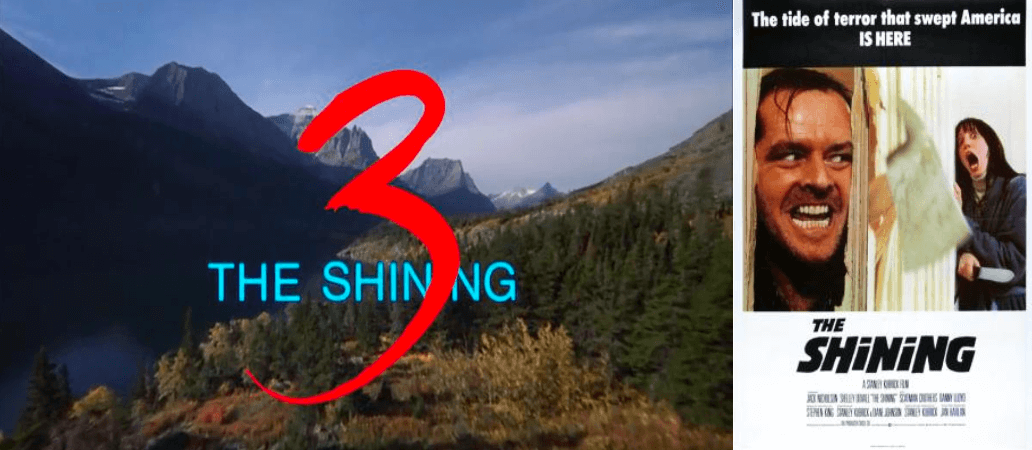
No. 3 "The Shining"
"The Shining" is a 1980 horror film produced and directed by Stanley Kubrick, co-written with novelist Diane Johnson. The film is based on Stephen King's 1977 novel of the same name and stars Jack Nicholson, Danny Lloyd, Shelley Duvall, and Scatman Crothers. Nicholson plays Jack Torrance, a writer who is attempting to overcome alcoholism and has taken a new position as the winter caretaker for the Overlook Hotel. Lloyd portrays his son Danny, who possesses psychic abilities, referred to as "the shining," which he learns from the hotel's chef Dick Hallorann (played by Crothers). Warned by his imaginary friend Tony, Danny discovers that the hotel is haunted, and as Jack's sanity unravels under the hotel's influence, Danny and his mother Wendy (played by Duvall) face deadly danger.
Production took place almost entirely at EMI Elstree Studios, and the sets were inspired by real locations. Kubrick often worked with a small team, allowing him to shoot numerous takes and sometimes leaving actors and crew exhausted. The new Steadicam was used for shooting various scenes, bringing innovation and an immersive look and feel to the film. Due to discrepancies, ambiguity, symbolic elements, and differences from the source material, there has been much speculation about the meaning and actions in the movie.
The film was released in the United States on May 23, 1980, and in the United Kingdom on October 2 by Warner Bros. There were multiple versions for theatrical release, with each subsequent version being shorter than the previous one, totaling approximately 27 minutes of cuts. The initial reactions to the film upon its release were mixed. Stephen King criticized the movie for deviating from the novel. The film received two controversial nominations at the 1st Golden Raspberry Awards in 1981—for Worst Director and Worst Actress (the latter was later rescinded in 2022 due to Kubrick's treatment of Duvall on set). Subsequently, the assessment of the film became more positive over time.
In 2012, "The Shining" was ranked 75th in Sight & Sound's director poll of the greatest films of all time. In 2018, the film was selected for preservation in the United States National Film Registry by the Library of Congress as being "culturally, historically, or aesthetically significant." In 2013, Stephen King published a sequel novel to the original, and nearly 39 years after the release of the original film, the sequel, titled "Doctor Sleep," premiered on November 8, 2019.

No. 2 "Texas Chainsaw Massacre"
"The Texas Chain Saw Massacre" is a 1974 American horror film produced, co-written, and directed by Tobe Hooper, with co-writing credits to Kim Henkel. The film stars Marilyn Burns, Paul A. Partain, Edwin Neal, Jim Siedow, and Gunnar Hansen. It tells the story of a group of friends who become victims of a cannibalistic family while on their way to visit an old homestead. The film was marketed as being based on true events to attract a wider audience and subtly commented on the political climate of the time. While the character "Leatherface" and some story details drew inspiration from the crimes of killer Ed Gein, much of the plot is fictional.
Hooper produced this film for less than $140,000 (adjusted for inflation to $800,000), and the cast was relatively unknown, mostly sourced from the central part of Texas, where the film was shot. The limited budget forced Hooper to shoot long hours, seven days a week, to finish quickly and reduce equipment rental costs. Due to the film's violent content, Hooper faced challenges finding a distributor but eventually secured a deal with Bryanston Distributing Company. Hooper restricted on-screen bloodshed, hoping to achieve a PG rating, but the Motion Picture Association of America (MPAA) rated it R. The film encountered similar difficulties internationally, with bans in several countries, and many theaters ceased screening it in 2019 in response to complaints about its violent content.
"The Texas Chain Saw Massacre" was released in the United States on October 11, 1974. Although initially receiving mixed reviews from critics, it was highly profitable, grossing over $30 million domestically, equivalent to approximately over $150.8 million as of 2019. In 2019, the film's box office surpassed 16.5 million tickets from 1974. Subsequently, it has been hailed as one of the best and most influential horror films. It is considered to originate several elements commonly found in the horror genre, including the use of power tools as murder weapons, portraying the killer as a large, cumbersome masked figure, and the killing of victims. It spawned a franchise, continuing the story of Leatherface and his family through sequels, prequels, remakes, comic books, and video games.

第 1 名 《驱魔人》
"The Exorcist" is a 1973 American supernatural horror film directed by William Friedkin. The screenplay was adapted by William Peter Blatty from his 1971 novel of the same name. The film stars Ellen Burstyn, Max von Sydow, Jason Miller, and Linda Blair. The story follows a young girl who is possessed by a demon, and her mother's attempt to rescue her through the exorcism performed by two Catholic priests.
Bratty, serving as a producer, and Friedkin, his choice for director, faced difficulties in casting the film. They opted for relatively unknown actors like Burstyn, Blair, and Miller instead of big stars, which met opposition from Warner Bros. executives. The main shoot was also challenging, taking place in both sweltering desert and refrigerated settings. Many actors and crew members were injured, and some died in unusual accidents that delayed production. The shooting schedule doubled, and the cost was almost three times the initial budget, leading to a belief that the film was cursed.
"The Exorcist" was released in 24 theaters in the United States on December 26, 1973. The reviews were mixed, but in cold weather, audiences formed long lines. Sold-out performances were even more lucrative for Warner Bros. as they had booked them into these theaters through a four-wall distribution rental agreement, a first for major studios. Some viewers experienced adverse physical reactions such as fainting or vomiting when confronted with realistic scenes like brain angiography. Many children were allowed to watch the film, leading to accusations that the Motion Picture Association of America (MPAA) rating board accommodated Warner Bros. by giving the film an R rating instead of an X rating to ensure commercial success for the troubled movie. Some cities attempted to ban it outright or prevent children from attending.
The cultural dialogue surrounding this film helped it become the first horror film to receive an Oscar nomination for Best Picture, alongside nine other films. Blatty won the award for Best Adapted Screenplay, and the sound engineers received the award for Best Sound. It has several sequels and was the highest-grossing R-rated horror film before "It" (not considering inflation). "The Exorcist" had a significant impact on popular culture, with some publications considering it one of the greatest horror films of all time. In 2010, the United States Library of Congress selected the film for preservation in the National Film Registry for its "cultural, historical, or aesthetic significance."

